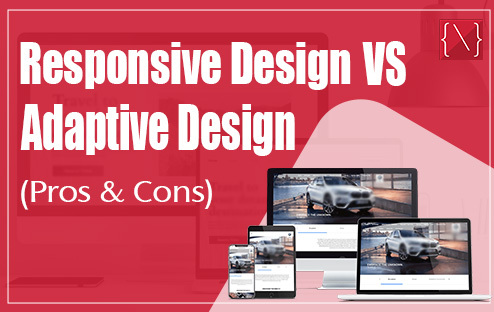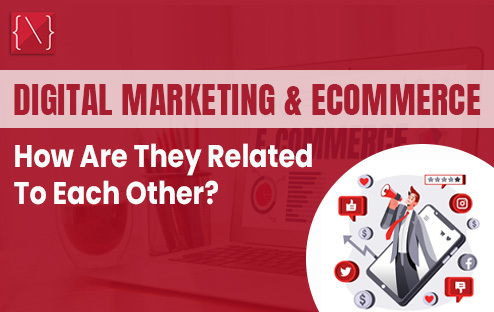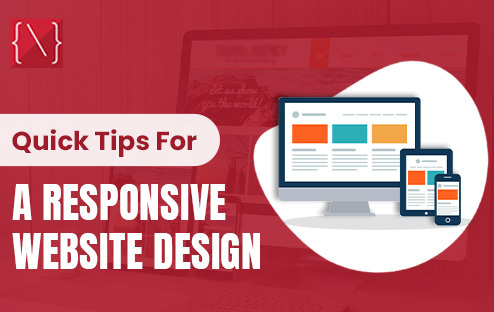
In today’s multi-device world, ensuring your website delivers a seamless experience across desktops, tablets, and smartphones is no longer a luxury, it’s a necessity. This is where responsive design and adaptive design come into play. Both approaches aim to create websites that adapt to different screen sizes, but they achieve this in fundamentally different ways. Choosing the right approach for your website depends on your specific needs, target audience, and budget. Let’s go deeper into the pros and cons of each method to help you make an informed decision.
Responsive Design: Fluid and Flexible
Responsive design is the current industry standard. It utilizes a single website layout that adjusts and reflows based on the user’s screen size. This is achieved through the use of CSS media queries, which are essentially sets of rules that dictate how the website elements should behave at different screen widths.
Pros of Responsive Design:–
- Reduced Development and Maintenance Costs: You only need to build and maintain one website, making it a more cost-effective solution.
- Flexibility: Responsive layouts can adapt to an infinite number of screen sizes, future-proofing your website for new devices and resolutions.
- Search Engine Optimization (SEO) Friendly: Search engines like Google favor mobile-friendly websites, and responsive design inherently delivers a good mobile experience.
- Consistent User Experience: Users will encounter the same branding and content across all devices, fostering a sense of familiarity and trust.
Cons of Responsive Design:–
- Potentially Less Control Over User Experience: Since the layout adapts automatically, you might have less granular control over how elements appear on specific devices.
- Complexity for Complex Layouts: Websites with intricate layouts or heavy use of multimedia might require more development effort to ensure a smooth responsive experience.
Adaptive Design: Tailored Experiences
Adaptive design, on the other hand, utilizes multiple pre-defined layouts optimized for specific device groups (e.g., desktops, tablets, mobiles). When a user accesses the website, their device is detected, and the most suitable layout is served.
Pros of Adaptive Design:–
- Highly Optimized User Experience: With dedicated layouts for different devices, you can create a highly tailored experience for each user group, potentially leading to better engagement.
- Faster Loading Times: Since users only receive the layout designed for their device, there’s less content to load, potentially improving website speed.
- Ideal for Complex Layouts: Websites with rich media or intricate layouts might benefit from the more structured approach of adaptive design.
Cons of Adaptive Design:–
- Increased Development and Maintenance Costs: Building and maintaining multiple layouts requires more time and resources.
- Limited Scalability: New device sizes or resolutions might require creating entirely new layouts to accommodate them.
- Potential for Inconsistent User Experience: The user experience can vary depending on the device used, which might be jarring for some users.
Choosing Between Responsive and Adaptive Design
So, which approach is right for you? Here are some factors to consider:
- Website Complexity: For simpler websites with straightforward layouts, responsive design is a great choice. For complex websites with rich media, adaptive design might offer advantages.
- Target Audience: If your target audience primarily uses desktops, responsive design might suffice. If your audience heavily relies on mobile devices, adaptive design might be worth considering.
- Budget: Responsive design is generally more cost-effective due to the need to maintain only one website.
- Future-Proofing: Responsive design is more adaptable to future screen sizes and devices.
Ultimately, the best approach depends on your specific needs and priorities. Consider your budget, target audience, and website complexity to make an informed decision.
Conclusion
Both responsive design and adaptive website design have their merits and drawbacks. By understanding the strengths and weaknesses of each approach, you can choose the method that best serves your website’s needs and delivers an optimal user experience across all devices. If you’re still unsure, consulting with a web design professional can help you make the best choice for your unique situation.
ALSO READ: Web 2.0 vs Web 3.0- Know The Differences & Similarities

Digital marketing and ecommerce are two buzzwords that have been dominating the business world in recent years. With the rise of technology and internet usage, these two concepts have become crucial for the success of any business, big or small. While some may think that they are separate entities, the truth is that they are deeply interconnected and rely on each other for growth and success.
To understand the relationship between digital marketing and ecommerce, let’s first define both terms. Digital marketing is the use of various digital channels such as social media, search engines, email, and websites to reach and engage with potential customers. On the other hand, ecommerce refers to the buying and selling of goods and services online. It includes everything from online shopping platforms to online banking and other online transactions.
Now, let’s dive deeper into how digital marketing and ecommerce are related to each other.
Increased Reach and Visibility
One of the main goals of digital marketing is to increase a business’s online presence and reach its target audience. With the use of various digital channels, businesses can reach a wider audience than traditional marketing methods. This, in turn, helps to increase brand awareness and visibility. With more people being aware of a brand’s existence, the chances of attracting potential customers and increasing sales also increases.
Ecommerce, on the other hand, provides businesses with a platform to showcase and sell their products or services online. With an ecommerce website, businesses can reach a global audience, expanding their reach and customer base even further. Digital marketing and ecommerce work hand in hand to increase a business’s reach and visibility, making it easier for them to connect with their target audience and potential customers.
Personalization and Targeting
Digital marketing offers businesses the ability to personalize their messages and target specific audiences based on their interests, demographics, and online behavior. This level of personalization helps businesses to create more relevant and tailored marketing campaigns, which, in turn, increases the chances of conversion.
Ecommerce also allows for personalization through features such as product recommendations and personalized offers based on a customer’s purchase history. This enhances the overall shopping experience for customers, making them more likely to return and make repeat purchases. Digital marketing and ecommerce work together to provide a more personalized and targeted approach, making it easier for businesses to attract and retain customers.
Data and Analytics
Digital marketing and ecommerce both rely heavily on data and analytics to measure their success and make informed decisions. With digital marketing, businesses can track and analyze various metrics such as website traffic, social media engagement, email open rates, and more. This data provides valuable insights into customer behavior and preferences, which can be used to optimize marketing strategies and campaigns.
Ecommerce platforms also provide businesses with data on customer behavior, purchase patterns, and more. This data can be used to improve the user experience, optimize product offerings, and make data-driven decisions to increase sales and revenue. The integration of digital marketing and ecommerce allows businesses to gather and analyze data from various sources, providing a more comprehensive understanding of their target audience and market.
Seamless Customer Journey
In today’s digital age, customers expect a seamless shopping experience, whether it’s online or in-store. Digital marketing and ecommerce work hand in hand to provide a smooth customer journey from the initial awareness stage to the final purchase. Digital marketing efforts drive traffic to ecommerce platforms, while ecommerce platforms provide a seamless and convenient buying experience for customers.
Moreover, with the rise of social commerce, where customers can discover and purchase products directly on social media platforms, the line between digital marketing and ecommerce is becoming even more blurred. This integration allows for a more seamless and effortless customer journey, increasing the chances of conversion and customer satisfaction.
In conclusion, digital marketing and ecommerce are two sides of the same coin. They rely on each other to drive business growth and success in today’s digital landscape. As technology continues to evolve, the relationship between these two concepts will only become stronger, making it crucial for businesses to understand and effectively utilize both to stay competitive.

In today’s digital age, having a responsive website design is crucial for any business or organization. With the majority of internet users accessing websites through their mobile devices, having a website that adapts to different screen sizes and devices is essential for a positive user experience. In this blog, we will discuss some quick tips for creating a responsive website design that will help you attract and retain more visitors.
1. Use a Mobile-First Approach: When designing a responsive website, it is important to start with a mobile-first approach. This means designing the website for mobile devices first and then scaling it up for larger screens. This approach ensures that the website is optimized for smaller screens and then adjusted for larger ones, rather than the other way around.
2. Keep it Simple: A cluttered and complicated website can be overwhelming for users, especially on mobile devices. Keep your design simple and clean, focusing on the most important elements. This will make it easier for users to navigate and find the information they are looking for.
3. Utilize Responsive Images: Images play a crucial role in website design, but they can also slow down the loading speed of a website. To ensure a fast and responsive website, use images that are optimized for different screen sizes. This will allow the website to load quickly on all devices without compromising on the quality of the images.
4. Use Scalable Vector Graphics (SVGs): SVGs are a great option for website design as they can be scaled up or down without losing their quality. This means that they will look crisp and clear on all screen sizes, making them perfect for responsive designs.
5. Make Use of CSS Media Queries: CSS media queries allow you to specify different styles for different screen sizes. This makes it easier to create a responsive design that adapts to different devices. You can use media queries to adjust font sizes, layouts, and other design elements according to the screen size.
6. Test, Test, Test: It is important to test your website on different devices and screen sizes to ensure that it is responsive and functioning properly. This will help you identify any design flaws or issues that need to be addressed.
7. Use a Responsive Framework: If you are not comfortable with coding and designing a responsive website from scratch, you can use a responsive framework. These frameworks provide pre-built templates and components that can be easily customized to create a responsive design.
8. Don’t Forget about Navigation: Navigation is an essential aspect of website design, and it becomes even more crucial for a responsive website. Make sure that your navigation is user-friendly and easy to use on all devices. A hamburger menu or a simple navigation bar can work well for mobile devices.
9. Optimize for Touchscreen Devices: With the rise of touchscreen devices, it is important to design your website with touch interactions in mind. This means providing enough space between clickable elements and using larger buttons and links for easy navigation on smaller screens.
10. Keep the User in Mind: Ultimately, the key to a successful responsive website design is keeping the user in mind. Put yourself in the shoes of your target audience and think about what they would want to see and how they would want to navigate through your website. This will help you create a design that is user-friendly and responsive.
In conclusion, having a responsive website design is crucial for the success of your online presence. By following these quick tips, you can create a website that adapts to different devices and screen sizes, providing a positive user experience for all your visitors. So, make sure to keep these tips in mind when designing your next website.
Cleonix Technologies
A professional Web Development Company is highly focused on providing world class and best in the industry standard services in every domain that we work upon.

 AJ 14, Salt Lake, Sector 2, Kolkata - 700091 |
AJ 14, Salt Lake, Sector 2, Kolkata - 700091 |  743 Virginia Ave NE Atlanta, GA 30306
743 Virginia Ave NE Atlanta, GA 30306



